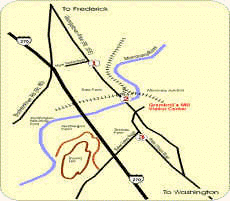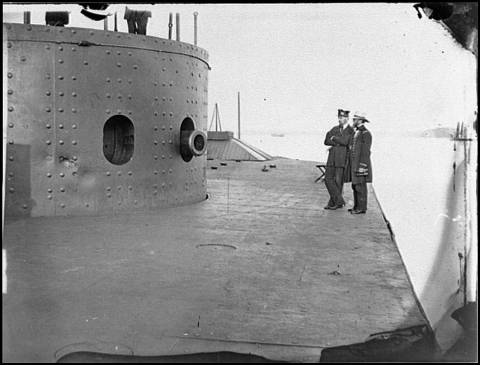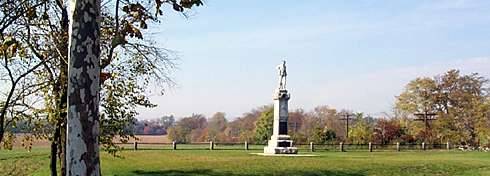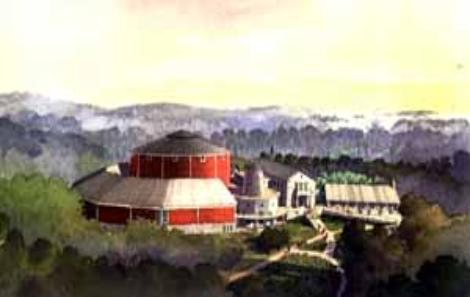The
lower portions of the remains could not be removed, as they lie underneath one
of the two Dahlgren cannons that constituted the Monitor's armament. It will not be possible to remove them until the
turret is brought to the surface and taken to the Mariners' Museum in Newport
News.
Project managers consider this
conclusive evidence that the remains are from one of the 16 sailors who perished
when the ship sank in a storm while under tow off Cape Hatteras, North Carolina.
The recovery team announced
that two bones found in the turret earlier in the week are probably from a human
arm. They also have been sent to Hawaii for identification.
Researcher say that since good
records exist of the identities of the Monitor's
crew, forensic and DNA testing should allow them to be identified.
There would be "a lot of
detective work to do," but the chances are the remains can be identified,
according to John Broadwater, the NOAA manager of the Monitor
operation.
"We'll make every attempt
to identify the person by name," Broadwater said. After the mystery is
solved, the
Navy will bury the remains in
a military cemetery, with full honors.
The steel claw that divers are
calling "the spider" has been lowered to the ocean floor where the Monitor's
rapidly deteriorating hull rests in 240 feet of water, the Virginian-Pilot
reported. A 500 ton crane on a specialized recovery ship will be used to hoist
the turret.
Project managers had hoped to
raise the turret as early as Friday, but both waves on top of the water and
swirling currents on the bottom were ruled too severe.
"Right now, the weather
is not what we would like to see, 3- to 4-foot seas and 15-knot currents,"
Cmdr. Bobbie Scholley, head of the Navy dive operations, said Saturday.
At last report Sunday night
the same conditions were still prevailing, and the projected lift date ranged
from later Sunday night through Tuesday.
About 150 Navy divers, along
with archaeologists from the National Oceanic and Atmospheric
Administration and the
Mariners' Museum, have been working 16 miles
off Cape Hatteras to bring the
turret to the surface.
Courtesy of:
Civil War Interactive: The Daily Newspaper of the Civil War
www.civilwarinteractive.com
3-D Theater, Civil War Photo Archive Planned for
Gettysburg
July 30, 2002--Too few Civil
War photographs are getting too much exposure, and too many are being overlooked
and ignored because too few people know they exist.
That's the way Bob Zeller
looks at it anyway. Yes, the same Bob Zeller who taught many to look at Civil
War photographs in a whole new way with his two Civil
War in Depth books of reassembled stereoscopic pictures which included
special viewing glasses to produce the three-dimensional effect.
Zeller is now working to
develop a combined library and archives of Civil War photography, a 3-D theater
and a studio. His partners in the venture include Gettysburg photographer Rob
Gibson, historian and Gettysburg battlefield guide Garry Adelman, and Charles
Morrongiello of Tampa, Fla., who will oversee the fund raising.
Not surprisingly, they are
looking to locate the National Center for Civil War Photography in Gettysburg.
It's still years away, all partners admit, but the corporation secured nonprofit
status last month.
"Gettysburg's where dad
and mom bring the family if they go to one Civil War battlefield their entire
lifetime," Zeller said. "There's plenty of things in Gettysburg, but
this would be an attraction that would be totally authentic, and at the same
time educational and entertaining."
Gibson and Zeller started
discussing the idea in 1999, they told the York Dispatch, after they met during
a demonstration at the Smithsonian Institute. They knew that writers and
filmmakers used the same Civil War photos repeatedly, while they were fielding
calls from people looking for pictures of specific regiments or family members.
Most books and films use
photos as a "highlight, rather than using them as historical
documents," Adelman said. "I think it requires certain expertise, and
Civil War photographs are absolutely under-used for what they're worth."
The center they envision would
include a database of all the major collections -- along with the location of
photographs owned by private collectors. They want to offer people the chance to
see original Civil War photographs, including many they have either never seen
at all, or not the way the photographer intended.
"I'm sure there's all
kinds of holes that can be filled and gaps in somebody else's collection,"
said Gibson, 44, of Gettysburg. "This way, we're just a clearinghouse, just
a middle man."
About 70 percent of the photos
taken during the Civil War were shot with a twin-lens camera, Zeller said. Like
a person seeing a scene with two eyeballs set slightly apart, the two pictures
have very slightly different views. When seen through polarized glasses, the
images have a third dimension and stunning detail.
"Basically, the home
entertainment during the Civil War was photography, and the stereo views were
the videos," Zeller said. Besides publishing the two books, Zeller has
taken the stereo views to events in his home state of North Carolina ranging
from Round Table meetings to barbecues, where people again find them
entertaining.
Zeller plans to project his
slide shows in a special 3-D theater in the center.
"I figured at some point
in time I've got to stop being the traveling doctor, making house calls, and
have people come to me -- in Gettysburg hopefully," said Zeller.
"We're just taking it step by step."
Zeller and Gibson have started
looking at buildings in town that would make good locations. To start a center
would cost about $250,000, they estimated, and a building would cost about
$500,000, Zeller said. But they want the center be in Gettysburg.
"The idea [for the
national center] was born in 1999 and, since then, it's grown from just an idea
to a Web site and seminars and a nonprofit organization," said Garry
Adelman, one of the partners who also is a battlefield guide and professional
historian. "And we're not fooling ourselves, we know it might be a
while."
Courtesy of:
Civil War Interactive: The Daily Newspaper of the Civil War
www.civilwarinteractive.com
Amazing Old Photo Collection Being Cataloged at Ohio
Museum
July 3, 2002--An amateur
photographer from Dayton, Ohio, who was just barely too young to take part in
the Civil War, is making his mark on history with the resurrection of thousands
of his photographs of battlefields in their turn of the century condition.
Albert Kern started taking the
pictures in 1890, which was also the start of the "monumentation
period" when parks were created and veterans and states began placing
memorials of their actions on the fields.
"It has given us a whole
new vista into what the battlefields looked like, usually within 30 years of
when the battles took place," said Robert E. Lee Krick, a historian at the
Richmond National Battlefield Park in Richmond, Va..
By the time he had finished in
1910, Kern had a personal collection of nearly 15,000 glass plate negatives.
Kern, who died in 1925, left instructions in his will for his son, Walter, to
pick out what he wanted and throw the rest away.
The collection was almost
forgotten when it was discovered in the basement of Walter Kern's former home in
1971 and given to the Montgomery County Historical Society.
There they languished in
safety and obscurity for another quarter century. In 1996, Bill Brown, a
historian at the Harper's Ferry Center in West Virginia, was shown some of the
old negatives and told his colleagues at the National Park Service.
After Brown's discovery, word of the collection began to get around. Kern's
photographs have been used by more than a dozen National Park Service sites to
enhance their understanding of the original Civil War locations as they looked
before tree growth, ground cover and suburban sprawl caused changes.
The plates still belong to the
historical society, which is continuing to organize and catalog the collection
in a computer database and hopes to be finished by the end of summer.
Mary Oliver, collection
curator, said the computerized catalog will make the Kern photographs even more
useful to historians, the Associated Press reported.
"It will be the first
time ever you'll be able to go through it and see exactly what's in the
collection," she said.
Some 13,000 of the 15,000
photos Kern made were devoted to sites of battles, fortresses and burials of the
Revolutionary War, the War of 1812 and the Civil War.
Dozens of Kern's photographs also are being used to develop a new master plan
for Stones River, Tenn., where more than 80 percent of the battlefield there has
yet to be claimed by the National Park Service.
14th
New Jersey Monument on the Monocacy Battlefield
|
|
Explosive
growth in surrounding Murfreesboro has already pushed commercial and residential
development up to the existing park boundaries in places, and more is threatened
on an almost daily basis.
Krick said the collection has
been a valuable tool for restoration and planning efforts all over the country
at battlefield sites such as Malvern Hill in Richmond, Va., and at Manassas, Va.
Courtesy of:
Civil War Interactive: The Daily Newspaper of the Civil War
www.civilwarinteractive.com
Petition Drive Started to Save Monocacy Battlefield
From Highway Widening
July 31, 2002--A petition
drive is being started in hopes of persuading the Maryland State Highway
Department not to widen Interstate 270. While highway widening is usually very
popular in heavily congested areas, I-270 already runs smack through the middle
of Monocacy National Battlefield.
William
Brinkley, of Grasonville, MD, is leading the effort, with assistance in
publicity from lifelong preservationist Jerry Russell. They are asking Civil War
folks to print out their petition, or create their own, and pass them around at
reenactments, Round Table meetings, book signings, or any other events where
sympathetic ears may be found.
The suggested petition
wording, Brinkley said, would be:
"The Maryland State
Highway Administration is proposing to widen Interstate 270, which bisects
historic Monocacy National Battlefield, site of the July 1864 battle which saved
Washington D.C. from capture in the last Confederate invasion of the Union.
Under the Highway Administration's proposal, the current four lane divided
highway could grow to eight lanes, running directly through the Thomas Farm,
site of the decisive, final phase of the battle.
"In addition the Highway
Administration is proposing to take several acres of the equally historic Best
Farm for a new interchange. Those of us who have added our names to this
petition believe the Maryland State Highway Administration must recognize the
historic value of Monocacy National Battlefield.
"We ask, as concerned
citizens that state highway officials work with those whose job it is to ensure
the preservation of the historic character of the battlefield. Any widening of
Interstate 270 must be held to six lanes, no interchange should be allowed on
the Best Farm, and mitigation measures devised to minimize damage to the
historic
landscape, buildings and
sites.
"We believe that Monocacy
National Battlefield is sacred national space, a place where men fought and died
to create the nation we have today. We urge active protection of this
battlefield and cooperation with those who preserve it to accomplish the goals
outlined above."
Signers should note their city
and state of residence along with their names. Signed petitions should be sent
to:
William Brinkley
110 Waterman's Court
Grasonville, MD 21638
Petitions must be received by
the end of August, Brinkley noted. Those with questions, comments or
contributions may call Brinkley at 410-827-8145.
"As we have told you
many, many times, battlefield preservation is a national project," Russell
said in a press release.
"Too often, state and
local officials think that their actions which impact on a particular
battlefield is strictly a local issue, a local concern. This is just not true.
Battlefields, particularly National Park Service battlefields (as Monocacy is),
belong to ALL Americans. They are cemeteries...and cemeteries belong to all of
us. Their care and maintenance are the responsibility of all of us,"
Russell added.
Courtesy of:
Civil War Interactive: The Daily Newspaper of the Civil War
www.civilwarinteractive.com
Congressman Introduces "Battlefield Protection
Act of 2002"

July
23, 2002-- Congressman Gary Miller (R-CA) and a bipartisan group of five
colleagues have introduced the "American Battlefields Protection Program
Act of 2002." This bill authorizes funding to preserve battlefields in the
United States.
"Our battlefields are living classrooms," stated Congressman Miller.
"They are a living, breathing, reminder of our nation's heritage and the
fact that our freedom was paid for with human lives. Preserving our battlefields
will allow future generations to visit and learn about the history of our
nation."
The "American Battlefields Protection Program Act of 2002" creates the
first authorization for funds to preserve battlefields in the United States.
Funds would be available to nonprofit organizations, local governments, and
states which seek to preserve battlefields and can provide a dollar for dollar
match.
Although Congress provided
funding for the Civil War Battlefield Preservation Program in Fiscal Years 1999
and 2002, it was done through an earmark. This bill would create a specific
authorization and eliminate the need for earmarked funds.
"During the past few years, this innovative program has been used to save
more than 7,000 acres of historic land nationwide," remarked Civil War
Preservation Trust President James Lighthizer.
"The program provides
matching funds that promote private and local investment in Civil War
battlefields. Authorization of the program will further encourage community
efforts to protect hallowed ground," Lighthizer added.
"Civil War battlefields provide a means for Americans to understand a
tragic period in U.S. history," National Parks Subcommittee Chairman George
Radanovich said. "Today, nearly 20 percent of these battlefields have been
lost to development, which is unfortunate. Now is the time to join a
public-private partnership to ensure that these sites are preserved."
Original cosponsors to the measure include Rep. George Radanovich (R-CA), Rep.
Jim Duncan (R-TN), Rep. Alan Mollohan (D-WV), Rep. Spencer Bachus (R-AL), and
Rep. Roger Wicker (R-MS). The bill has been referred to the House Resources
Subcommittee on National Parks and Public Lands, which is chaired by Rep.
Radanovich (R-CA).
Courtesy of:
Civil War Interactive: The Daily Newspaper of the Civil War
www.civilwarinteractive.com
New Vice President Named to Gettysburg Visitor
Center Project
Aug. 2, 2002--The organization
managing the private side of the "public-private" fundraising
operation for the new Gettysburg Visitor Center has announced a change of
personnel at the upper levels. The foundation has already come under
Congressional questioning for the tripling of the original projected price tag,
with at least two years to go until groundbreaking is expected to begin.
Elliot H. Gruber, the former chief operating
officer and acting president of the Civil War Preservation Trust will join the
Gettysburg National Battlefield Museum Foundation August 5 as vice president for
external affairs. He succeeds Suzanne Helm, who was named director of
advancement for The Potomac School in McLean, Va., in June.
Gruber comes to the Foundation
from the Ocean Conservancy, where he served for the last two years as vice
president of membership and development. His background includes fundraising
responsibilities for a number of nonprofits, including the National Parks and
Conservation Association.
Gruber's primary
responsibility will be to raise the necessary funds to plan, design, finance,
construct and operate a new museum and visitor center at Gettysburg National
Military Park.
“Elliot brings more than two
decades of nonprofit fundraising experience to the Foundation, with a dozen of
those years leading programs that supported the preservation of our Civil War
battlefields and our national parks," Foundation President Robert C.
Wilburn said. "His experience will be invaluable as we work with the park
service to ensure that visitors, and future generations of visitors, gain a
deeper understanding of the significance of Gettysburg,”
“I am thrilled to return to
the Civil War community and to work for the Foundation on this historic
opportunity,” Gruber said.
The
Gettysburg National Battlefield Museum Foundation is working in partnership with
the National Park Service to preserve the resources of the park, to tell the
story of the Gettysburg Campaign, and to give visitors a deeper, more lasting
appreciation for what happened there.
The
Foundation has launched a $95 million campaign to improve visitor facilities,
restore and preserve the park's extensive collection of artifacts and
manuscripts, including the historic Cyclorama painting, and restore portions of
the battlefield to their 1863 appearance. Planned program improvements will make
greater use of the park's collection and provide better links between the
historic town, the battlefield, and the new museum and visitor center.
During his tenure with the
Ocean Conservancy, Gruber increased significantly capital campaign and planned
giving revenues, while also identifying new sources of funding for the
environmental organization.
A native of Danbury
Connecticut, Gruber received his bachelor's degree in psychology, cum laude, from Brandeis University, and his master's degree in
organizational psychology, with highest honors, from
Columbia University. Gruber,
his wife Elinor and sons Sam and Louis reside in McLean, Virginia.
Courtesy of:
Civil War Interactive: The Daily Newspaper of the Civil War
www.civilwarinteractive.com
New Conference on "Women and the Civil
War" Announces Formation of New Organization
Aug. 1, 2002--WCW, Inc. and
the Conference on Women and the Civil War is announce the formation of the
Society for Women and the Civil War, a membership organization dedicated to
recognizing women's efforts, both those who lived through the war, and those
who, today, research, reenact or otherwise honor them.
The group, whose website is at
http://womenandthecivilwar.org/
welcomes both women and men as members.
Members of the Society will receive a quarterly electronic newsletter, our CWCW
logo pin (while supplies last), and in 2003, a list of other members (inclusion
in the list is voluntary).
We envision that the Society
will serve its members by helping them get in touch with others pursuing similar
research, preservation, memorialization , reenactment, or publishing goals.
The Society will also serve an
advocacy and consulting role in the larger Civil War community, connecting other
organizations (such as Round Tables, Parks, and Museums) with speakers and
exhibitors from our Membership.
Membership dues are $25 per year. Those who join now will automatically be
renewed, at no additional cost, for 2003. Our Membership Director is Sara
Bartlett and our Newsletter Editor is Meg Galante-DeAngelis.
"I hope all of you are as excited about the Society as we are,"
society president DeAnne Blanton said in a press release.
"If
you have any questions about the organization or would like to join, please
contact me or Sara Bartlett at womencivilwar@aol.com
," Blanton added
Controversial Candidate For SCV Leadership Post
Defeated By Seventeen Votes
Aug. 2, 2002-(CWI)-Kirk Lyons,
a North Carolina attorney whose firm has defended leaders of the Ku Klux Klan
and filed numerous suits protesting removals of the Confederate flag, was
defeated by an extremely narrow margin for a top leadership position in the Sons
of Confederate Veterans.
Lyons lost a runoff vote by
only 17 votes out of 633 cast to Charles Hawks for the position of
"commander of the Army of Northern Virginia" one of the SCV's three
national divisions.
The election, scheduled to
take two hours, lasted for four and a half. The group's annual meeting took
place at the historic Peabody Hotel in Memphis.
Lyons emerged from a
sweltering conference room looking startled by his defeat, the Atlanta Journal-Constituion
reported.
After shaking Hawks' hand and
promising his support, he also suggested that his crusade to shake up the
31,000-member organization wasn't over yet.
"No one likes to
lose," Lyons said. "There'll be another race, another day, another
time."
Lyons' candidacy for SCV
leadership had provoked extensive controversy both inside and outside the group.
Many feared that even if his supporters' claims that his radicalism was
overblown were true, public perception would result in a public relations
nightmare.
Hawks, 59, a retired tax
administrator from Raleigh, N.C., said before the vote that Lyons' election
would "cast a pall so dark over this organization that the light in which
we would hope to have the public see us will be shadowed forever."
Many SCV members say they
never heard Lyons speak or perform a racist act. Instead, they applaud his legal
strategy of filing lawsuits in defense of "Southern heritage," such as
one on behalf of two Ohio high school students suspended for wearing T-shirts
that bore Confederate flags.
A number of SCV members had
talked of leaving the group if Lyons won. Yet Lyons said the closeness of the
election underscored the frustration that runs through much of the membership.
"Our heritage is in such
dire straits that people supported my candidacy, not because of my past
associations, but in spite of them," he said.
The SCV has often struggled to
separate itself from racist groups it sees as hijacking Confederate symbols,
such as the battle flag. At the same time, many of the SCV's members are
frustrated by what they see as an erosion of those symbols in public places by
state governments.
Lyons, 46, has described his
law firm as being devoted to ending the elimination of Southern heritage. His
clients over the past 15 years have included Louis Beam, former Grand Dragon of
the Texas Ku Klux Klan, and members of violent right-wing groups such as the
Posse Comitatus, the White Patriot Party and the White Aryan Resistance.
It was through that work that
he met his wife, Brenna Tate, daughter of Aryan Nations leader Charles Tate. The
wedding was performed by the Aryan Nations' founder and KKK leader Beam served
as Lyons' best man.
Lyons also protested the 1993
opening of the Holocaust Museum in Washington, D.C., while a German magazine
published an interview in which he praised the historic mission of the Klan and
made admiring observations about Adolph Hitler.
Lyons waves off criticisms of
his past as "guilt by association" or statements taken out of context.
Courtesy of:
Civil War Interactive: The Daily Newspaper of the Civil War
www.civilwarinteractive.com




